Health
Everything You Need to Know About Esfeet: A Guide for Podiatry Patients, Fitness Enthusiasts, and Health Blog Readers

Introduction
Flat feet, or “Esfeet,” is a condition that affects millions of people worldwide. For some, it may be a minor inconvenience; for others, it can cause significant pain and discomfort. Understanding Esfeet is essential for managing its impact on daily life effectively. This blog post aims to demystify Esfeet by providing comprehensive information tailored to podiatry patients, fitness enthusiasts, and health blog readers across all age groups.
In the following sections, we will delve into what Esfeet is, its causes, symptoms, and diagnostic methods. Then, we’ll explore various treatment options and preventive measures to help you manage this condition and live a comfortable, active life.
Understanding Esfeet
Definition
The term “Esfeet” originates from the combination of “flat” and “feet.” It signifies a condition where the arch of the foot collapses, making the entire sole come into complete or near-complete contact with the ground. In a normal foot, the arch acts as a natural shock absorber, distributing body weight evenly across the feet and legs. When this arch is flattened, it disrupts the natural alignment and functioning of the foot.
In a typical foot arch, there are three main components: the medial longitudinal arch, the lateral longitudinal arch, and the transverse arch. These arches work together to provide stability and flexibility. When these arches are flattened, it can lead to overpronation, where the foot rolls inward excessively during walking or running. This can result in various issues, from foot pain to knee and back problems.
Causes
Several factors can contribute to the development of Esfeet. Genetics play a significant role, as foot structure can be inherited. If your parents or grandparents had flat feet, you are more likely to develop them.
Musculoskeletal conditions, such as posterior tibial tendon dysfunction (PTTD), can weaken the supportive structures of the foot, leading to a collapse of the arch. Injuries like fractures or dislocations can also damage the foot’s ligaments and tendons, contributing to flat feet.
Weight is another crucial factor. Excessive body weight puts additional strain on the feet, which can cause the arches to flatten over time. This is why people who are overweight or obese are more prone to developing Esfeet.
Age-related weakening of the foot’s supportive tissues is also common. As we age, the tendons and ligaments can lose their elasticity and strength, making it easier for the arches to collapse.
Recognizing Esfeet
Symptoms
The symptoms of Esfeet can vary from mild discomfort to severe pain. Common symptoms include aching or pain in the arches and heels, especially after prolonged standing or physical activity. The pain can extend to the ankles, knees, hips, and lower back due to the altered biomechanics of the body.
Swelling along the inner side of the ankle and foot fatigue are also common symptoms. People with Esfeet often find it challenging to find comfortable shoes, as standard footwear may not provide the necessary support.
Overpronation is another noticeable symptom. This condition occurs when the foot rolls inward excessively while walking or running, causing the ankle to drop toward the ground. Overpronation can lead to a wide range of issues, including shin splints, plantar fasciitis, and even stress fractures.
Diagnosis
Accurate diagnosis is crucial for effective management of Esfeet. A healthcare professional, usually a podiatrist, will conduct a thorough physical examination of your feet. They will observe your foot structure, gait, and range of motion.
In some cases, imaging tests like X-rays, MRI, or CT scans may be required to assess the extent of the arch collapse and to rule out other underlying conditions. A footprint analysis, where you walk on a special mat that records your foot pressure, can also help in diagnosing the severity of Esfeet.
Managing Esfeet
Treatment Options
Managing Esfeet involves a combination of treatments aimed at relieving symptoms and improving foot function. One of the most common treatments is the use of orthotic devices. These custom-made shoe inserts provide additional arch support and help correct overpronation, reducing pain and discomfort.
Proper footwear selection is also crucial. Shoes with good arch support, cushioning, and a firm heel counter can significantly alleviate symptoms. Avoiding high heels and opting for supportive athletic shoes can make a big difference.
Physical therapy plays a vital role in managing Esfeet. Exercises that strengthen the muscles of the foot and ankle can improve alignment and stability. Stretching exercises for the Achilles tendon and calf muscles can also help relieve tension and reduce pain.
For those experiencing significant pain, over-the-counter pain relievers like ibuprofen or acetaminophen can provide temporary relief. In severe cases, surgical intervention may be considered. Procedures like tendon transfers or osteotomies can help restore normal foot function, but these are usually reserved as a last resort.
Preventive Measures
Preventing Esfeet involves maintaining good foot health and taking measures to reduce strain on the arches. Maintaining a healthy weight is crucial, as excess body weight puts additional pressure on the feet. Regular exercise, especially activities that strengthen the foot and ankle muscles, can help maintain the integrity of the arches.
Wearing supportive shoes with proper arch support and cushioning is essential for arch preservation. Avoiding high-impact activities like running on hard surfaces can also reduce the risk of injury and strain.
Listening to your body is vital. If you experience pain or discomfort in your feet, seek medical attention promptly. Early intervention can prevent the condition from worsening and improve your quality of life.
Living Well with Esfeet
Practical Tips
Living with Esfeet requires making some lifestyle adjustments to ensure comfort and prevent complications. One of the most important steps is wearing supportive footwear. Invest in shoes that provide good arch support and cushioning. Custom orthotic inserts can also make a significant difference.
Incorporating stretching and strengthening exercises into your daily routine can help maintain foot health. Exercises like toe curls, heel raises, and ankle rotations can strengthen the foot and ankle muscles, improving overall stability.
Pain management techniques such as using ice packs or over-the-counter pain relievers can provide temporary relief from discomfort. Monitoring changes in symptoms and foot structure is crucial. If you notice any worsening of symptoms, consult a healthcare professional for further evaluation.
Joining support groups or seeking guidance from a podiatrist can provide valuable insights and support. Connecting with others who have similar experiences can help you navigate the challenges of living with Esfeet.
YOU MAY ALSO LIKE
The Revolutionary Rise of Pollaste: Your Ultimate Guide
Conclusion
Esfeet, or flat feet, is a common condition that can cause significant pain and discomfort if not managed properly. Understanding the causes, symptoms, and treatment options for Esfeet is essential for effective management. By incorporating preventive measures and making lifestyle adjustments, you can live a comfortable, active life despite having flat feet.
Remember, early intervention is key. If you suspect you have Esfeet, seek professional medical advice for proper diagnosis and treatment. With the right approach, you can manage this condition effectively and continue to enjoy your favorite activities.
FAQs about Esfeet
1. What are the symptoms of Esfeet?
Common symptoms include pain in the arches and heels, swelling along the inner side of the ankle, and foot fatigue. Overpronation can also occur.
2. How is Esfeet diagnosed?
A healthcare professional conducts a physical examination, observes your foot structure and gait, and may use imaging tests like X-rays or MRI for accurate diagnosis.
3. What are the treatment options for Esfeet?
Treatment includes orthotic devices for arch support, proper footwear, physical therapy, pain relievers, and, in severe cases, surgical intervention.
4. Can Esfeet be prevented?
Yes, maintaining a healthy weight, wearing supportive shoes, and doing exercises to strengthen foot and ankle muscles are effective preventive measures.
5. How can I live comfortably with Esfeet?
Wearing supportive footwear, incorporating stretching and strengthening exercises, and consulting a healthcare professional for pain management and advice can help.
Health
Unveiling the Mystical Wisdom of Põde to Transform Your Life

Introduction
In a world where the search for wellness often leads us to the latest trends and fads, there exists a timeless philosophy that has quietly woven itself into the fabric of ancient wisdom. This philosophy, known as “Põde,” offers a holistic approach to health and well-being that transcends the traditional boundaries of medicine and culture. For wellness enthusiasts, cultural explorers, and health bloggers, understanding the concept of Põde can provide invaluable insights into achieving balance, harmony, and a deeper connection with oneself and the world.
In this blog post, we will explore the multifaceted nature of Põde, its historical and cultural significance, and how integrating this ancient wisdom into modern life can lead to a more fulfilling and enriched existence. From its origins in the Estonian language to its applications in various wellness practices, Põde offers a rich tapestry of knowledge that can transform your approach to health and well-being.
Understanding the Meaning of Põde
At its core, the term “Põde” originates from the Estonian language, where it primarily means to suffer or endure an illness or distress. However, this literal translation only scratches the surface of its profound implications. In the broader context, Põde encapsulates the human experience of navigating through hardships and emerging stronger on the other side. It encompasses not just physical ailments but also emotional, mental, and spiritual challenges.
Historically, the concept of Põde has been deeply ingrained in Estonian culture, where individuals are encouraged to confront their difficulties head-on and find resilience within themselves. This philosophy of enduring and overcoming adversity resonates with many ancient cultures and their approaches to holistic health and wellness.
The Historical Roots of Põde
The historical roots of Põde can be traced back to ancient Eastern philosophies, such as Ayurveda and Traditional Chinese Medicine (TCM). These systems of healing emphasize the interconnectedness of the body, mind, and spirit, and advocate for a balanced approach to health. Põde aligns with these principles by encouraging individuals to address the root causes of their ailments rather than merely treating the symptoms.
In Estonia, traditional healing practices often incorporated elements of Põde, where healers would guide individuals through their journeys of recovery and self-discovery. This holistic approach to health has been passed down through generations, preserving the wisdom of Põde and its relevance in modern times.
Põde in Modern Wellness Practices
In contemporary wellness practices, Põde serves as a guiding principle for those seeking to achieve a balanced and harmonious life. By recognizing and addressing the multifaceted nature of suffering, individuals can cultivate a deeper understanding of their own needs and challenges.
One key aspect of Põde is the emphasis on self-awareness and self-compassion. By acknowledging our vulnerabilities and taking proactive steps to nurture our well-being, we can build resilience and find strength in adversity. This approach is particularly relevant in today’s fast-paced world, where the pressures of daily life can often lead to burnout and stress.
Emotional and Mental Health Benefits of Põde
Põde offers valuable insights into maintaining emotional and mental well-being. By addressing the root causes of emotional distress and fostering a compassionate mindset, individuals can develop healthier coping mechanisms and improve their overall mental health.
Practicing mindfulness and meditation, for example, aligns with the principles of Põde by promoting self-awareness and emotional regulation. These practices encourage individuals to observe their thoughts and emotions without judgment, allowing them to better understand and manage their inner experiences.
Physical Health Benefits of Põde
In addition to its mental and emotional benefits, Põde also has significant implications for physical health. By adopting a holistic approach to wellness, individuals can enhance their overall vitality and well-being.
For instance, incorporating Ayurvedic principles into one’s lifestyle can help balance the body’s energies and promote optimal health. Ayurvedic practices such as mindful eating, regular exercise, and herbal remedies align with the philosophy of Põde by addressing the root causes of physical ailments and fostering long-term health.
Põde and the Importance of Community
A central tenet of Põde is the importance of community and connection. Throughout history, people have relied on their communities for support, healing, and resilience. This sense of belonging and interconnectedness is vital for overall well-being.
Engaging with a supportive community can provide a sense of purpose and fulfillment, helping individuals navigate through challenging times. Whether it’s participating in group activities, joining wellness retreats, or simply connecting with like-minded individuals, fostering a sense of community can enhance the principles of Põde in one’s life.
Põde in Daily Life
Integrating the wisdom of Põde into daily life involves adopting mindful and intentional practices that promote holistic well-being. Simple habits such as journaling, practicing gratitude, and setting clear intentions can help individuals stay connected to their inner selves and cultivate a sense of balance.
Additionally, prioritizing self-care and making time for activities that bring joy and fulfillment are essential components of living a life aligned with the principles of Põde. By nurturing both the mind and body, individuals can create a harmonious and fulfilling existence.
Põde and Personal Growth
Personal growth and self-discovery are integral aspects of the Põde philosophy. By confronting and overcoming challenges, individuals can gain valuable insights into their strengths and areas for improvement. This process of self-reflection and growth is essential for achieving a sense of fulfillment and purpose.
Engaging in activities that promote personal growth, such as reading, attending workshops, and seeking mentorship, can help individuals deepen their understanding of themselves and their paths. The principles of Põde encourage continuous learning and development, fostering a lifelong commitment to self-improvement.
Põde and Spiritual Well-Being
Spiritual well-being is another key component of the Põde philosophy. By nurturing the soul and seeking a deeper connection with the universe, individuals can achieve a sense of inner peace and harmony.
Practices such as meditation, prayer, and spending time in nature can help individuals cultivate a spiritual connection and find meaning in their lives. These practices encourage individuals to look beyond the material world and explore the deeper aspects of their existence, aligning with the holistic principles of Põde.
Põde and the Environment
The principles of Põde also extend to our relationship with the environment. By recognizing the interconnectedness of all living beings and the natural world, individuals can develop a greater sense of responsibility and stewardship for the planet.
Sustainable practices such as reducing waste, conserving resources, and supporting eco-friendly initiatives align with the philosophy of Põde by promoting harmony and balance with the environment. By making mindful choices that benefit both ourselves and the planet, we can contribute to a healthier and more sustainable world.
YOU MAY ALSO LIKE
The Revolutionary Rise of Pollaste: Your Ultimate Guide
Conclusion
The timeless wisdom of Põde offers a holistic approach to health and well-being that transcends traditional boundaries. By integrating the principles of Põde into our lives, we can achieve a balanced and harmonious existence that nurtures the mind, body, and spirit.
Whether you are a wellness enthusiast, a cultural explorer, or a health blogger, the philosophy of Põde provides valuable insights and practical tools for enhancing your overall well-being. By embracing this ancient wisdom, you can transform your approach to health and wellness, and create a more fulfilling and enriched life.
Ready to explore the profound benefits of Põde for yourself? Start by incorporating the principles of Põde into your daily routine and join a community of like-minded individuals who share your commitment to holistic well-being. Together, we can unlock the full potential of this timeless philosophy and create a brighter, healthier future for all.
FAQs about Põde
- What is Põde?
Põde is a holistic wellness philosophy that focuses on the interconnectedness of mind, body, and spirit while promoting personal growth and community support.
- How can I incorporate Põde into my daily life?
You can integrate Põde by practicing mindfulness, prioritising self-care, journaling, and fostering community connections.
- What are the physical health benefits of Põde?
Põde promotes optimal health through techniques like Ayurvedic practices, mindful eating, and regular exercise, addressing root causes of ailments.
- How does Põde relate to spiritual well-being?
Põde encourages practices like meditation and spending time in nature to nurture spiritual connections and find deeper meaning in life.
- What is the environmental focus of Põde?
Põde advocates for sustainable living by recognising our relationship with the environment and encouraging responsible stewardship of the planet.
Health
Discover Your Perfect Half Marathon Adventure in 2024-2025
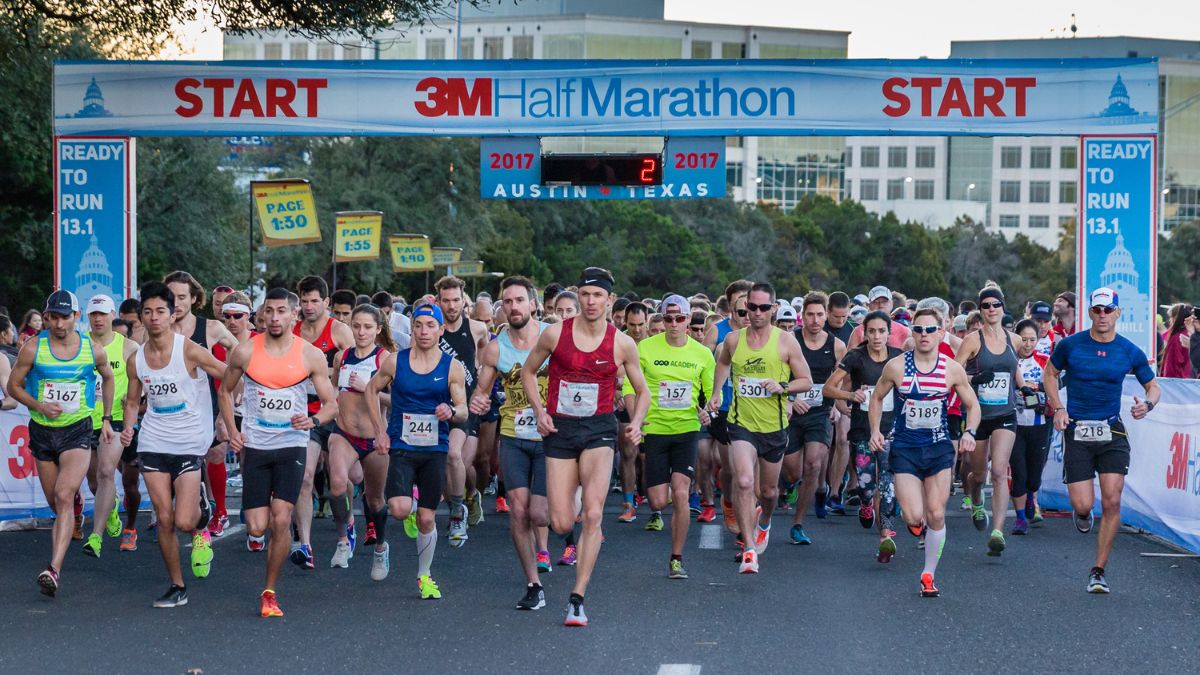
Are you ready to lace up your running shoes and take on the challenge of a half marathon? Whether you’re a first-time runner, an experienced athlete, or a fitness enthusiast, finding the perfect race can be daunting. With so many options available, how do you choose the one that best matches your goals and preferences?
In this comprehensive guide, we’ll introduce you to an exciting world of half marathons happening in the US from 2024 to 2025. We’ll provide useful tools to search and filter races, highlight some of the most popular and unique events, and offer essential tips for training, race day preparation, and travel. By the end of this guide, you’ll be equipped with everything you need to find and conquer your ideal half marathon.
Search and Filter Tools
Interactive Search Bar
Imagine having a tool that allows you to find the perfect half marathon based on your specific needs. Our interactive search bar lets you filter races by location, date, difficulty, scenery, charity, and more. Whether you want a scenic coastal route or a challenging mountain trail, you can easily narrow your options.
Advanced Search Options
For those with specific preferences, advanced search options are a game-changer. You can filter by trail vs. road races, elevation gain, course type, and more. This ensures you find a race that matches your skill level and interests.
Map Integration
Visual learners will appreciate the integrated map displaying race locations with interactive markers. Click on any marker to view detailed information about the race, including course maps, elevation profiles, and user reviews. This feature makes it easy to visualize where each race is located and plan your travel accordingly.
Curated Half Marathon Lists
Popular Half Marathons
Some races have earned a stellar reputation for their excellent organization, enthusiastic crowds, and memorable experiences. Events like the Boston Half Marathon, the Rock ‘n’ Roll Las Vegas Half Marathon, and the Disney Wine & Dine Half Marathon are widely recognized and highly rated. These races often sell out quickly, so early registration is essential.
Beginner-Friendly Half Marathons
If you’re new to the half marathon scene, choosing a race that’s beginner-friendly can make your experience more enjoyable. Look for events with flat courses, ample support stations, and a welcoming atmosphere. The Richmond Half Marathon and the Santa Monica Classic Half Marathon are excellent choices for first-time half marathoners.
Challenging Half Marathons
For seasoned runners seeking a tough course, there are plenty of challenging half marathons to test your limits. These races often feature steep inclines, rugged terrain, or extreme weather conditions. The Big Sur Half Marathon on Monterey Bay and the Leadville Trail Marathon are known for their difficulty and breathtaking scenery.
Scenic Half Marathons
If stunning views and unique locations are what you crave, scenic half marathons are the way to go. The Napa to Sonoma Wine Country Half Marathon and the Kauai Half Marathon offer picturesque routes through vineyards and along coastlines. Running these races is an experience that goes beyond just completing a distance.
Themed Half Marathons
Themed races add an extra layer of fun and excitement to your running experience. From music-themed events like the Rock ‘n’ Roll series to culinary-themed races like the Napa Valley Harvest Half Marathon, there’s something for everyone. These events often include post-race celebrations with live music, food, and entertainment.
Charity Half Marathons
Running for a cause can add immense meaning to your half marathon experience. Many races support various charities, allowing you to raise funds and awareness while you run. The Chicago Half Marathon and the Seattle Half Marathon are examples of events that partner with charitable organizations to make a positive impact.
In-Depth Race Profiles
Detailed Race Information
To help you make an informed decision, each race profile includes comprehensive data such as date, time, and location, course maps and elevation profiles, entry fees and registration deadlines, and race amenities like aid stations and bag check. Understanding these details can help you prepare effectively and ensure a smooth race day experience.
User Reviews and Ratings
Hearing from fellow runners can provide valuable insights into what to expect from a race. User reviews and ratings give you a firsthand look at the experiences of others, highlighting aspects like course difficulty, organization, and overall atmosphere. This feedback can guide you in selecting the right race for your goals.
Race Photos and Videos
Seeing is believing, and race photos and videos showcase the atmosphere, course scenery, and memorable moments of each event. These visuals can inspire you and give you a better sense of what to expect on race day.
Training and Preparation
Training Plans
Proper training is crucial for a successful half marathon. We offer customizable training plans tailored to different fitness levels, ensuring you build strength, endurance, and confidence leading up to race day. Whether you’re a beginner or a seasoned runner, our plans will guide you through each step of your preparation.
Nutrition and Hydration Tips
Fueling your body correctly is essential for peak performance. Our nutrition and hydration tips provide guidance on what to eat and drink before, during, and after your runs. Learn about the best foods to boost your energy and how to stay hydrated throughout your training and on race day.
Mental Preparation
Running a half marathon is as much a mental challenge as it is a physical one. Our advice on overcoming race-day anxiety and staying motivated will help you maintain a positive mindset. Techniques like visualization, goal-setting, and mindfulness can make a significant difference in your performance.
Gear Recommendations
The right gear can enhance your comfort and performance. We suggest essential running gear and equipment, including shoes, apparel, and accessories. Knowing what to wear and bring on race day will ensure you’re prepared for any conditions.
Travel and Accommodations
Race Travel Tips
Planning your travel can be just as important as your training. Our race travel tips cover transportation options, travel planning, and logistics to ensure you arrive at your destination stress-free. Whether you’re driving, flying, or taking public transport, we’ve got you covered.
Accommodation Recommendations
Finding the right place to stay can enhance your race weekend experience. We offer suggestions for hotels and other lodging near race locations, considering factors like proximity to the start line, amenities, and budget. A comfortable and convenient accommodation can make a big difference in your overall enjoyment.
Local Attractions
Make the most of your race weekend by exploring nearby points of interest. Our guide highlights local attractions, dining options, and activities to enjoy before or after your race. From sightseeing to trying local cuisine, there’s plenty to discover.
Race Day Tips
Pre-Race Checklist
Preparation is key on race day. Our pre-race checklist covers essential items to bring, such as your race bib, hydration supplies, and comfortable clothing. Ensuring you have everything you need will help you feel confident and ready to run.
Race Day Nutrition
What you eat before and during the race can significantly impact your performance. Our tips on pre-race and race-day fueling provide guidance on what to consume for sustained energy and optimal performance. Learn about the best snacks, gels, and hydration strategies to keep you going strong.
Pacing Strategies
Finding the right pace can make or break your half marathon experience. We offer guidance on different pacing approaches, whether you’re aiming for a personal best or just want to finish comfortably. Understanding how to manage your pace will help you avoid burnout and achieve your goals.
Post-Race Recovery
Recovery is an essential part of any race. Our advice on recovering after the race includes tips on stretching, refueling, and rest. Proper recovery ensures you bounce back quickly and can continue your running journey without setbacks.
YOU MAY ALSO LIKE
How Boltból Revolutionized Sports and Fitness
Half marathons are a fantastic way to challenge yourself, explore new places, and connect with a vibrant community of runners. With our comprehensive guide, you’re now equipped to find the perfect race, train effectively, and enjoy every step of your half marathon adventure.
Ready to take the next step? Browse our curated list of half marathons, connect with fellow runners, and start planning your race today. Your ultimate half marathon experience awaits!
FAQs
- What is a half marathon distance?
A half marathon is 13.1 miles (21.1 kilometers), providing a great challenge for runners.
- How do I prepare for my first half marathon?
Start with a training plan, focus on nutrition, and gradually build your long-distance running stamina.
- What should I eat the day before a half marathon?
Aim for a carbohydrate-rich meal with low fat and high protein. Foods like pasta, rice, or a sandwich can work well.
- What gear do I need for a half marathon?
Essential gear includes proper running shoes, comfortable clothing, and hydration supplies for race day.
- How long does it take to train for a half marathon?
Typically, training for a half marathon takes about 8 to 12 weeks, depending on your fitness level.
Health
How Boltból Revolutionized Sports and Fitness
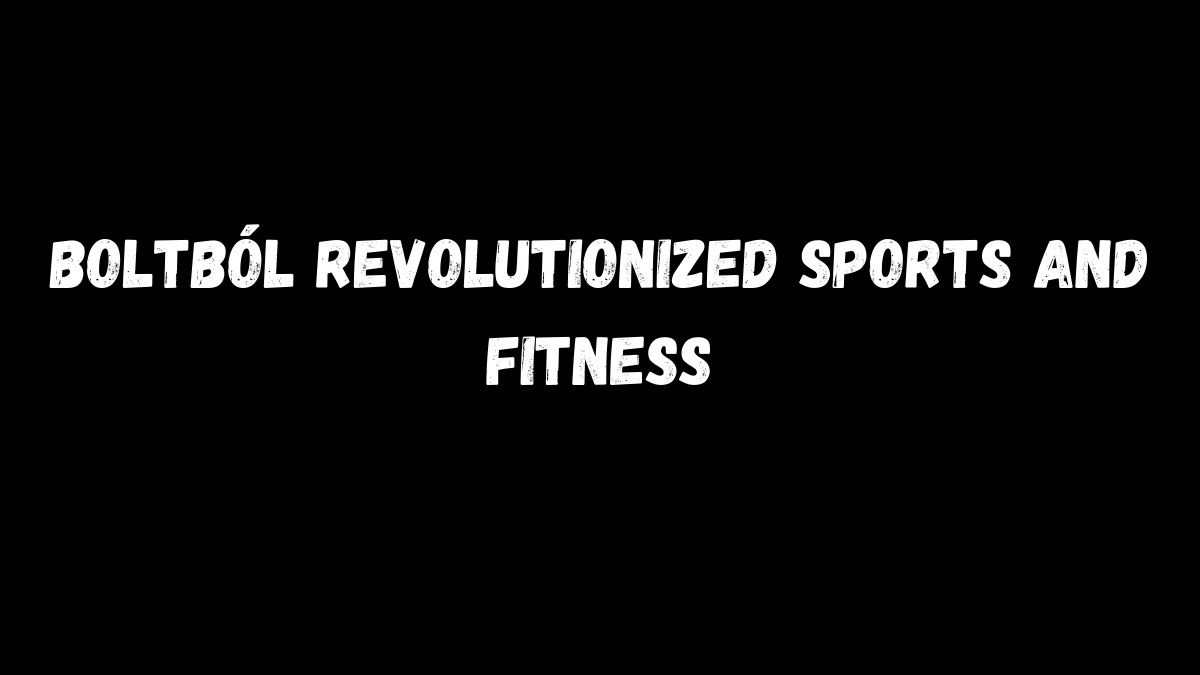
Introduction
In an age where innovation drives every sector, sports and fitness are no exceptions. One particular game-changing development in this realm is Boltból. This sport has taken the world by storm, captivating sports enthusiasts, the fitness community, and tech-savvy readers alike. But what exactly is Boltból, and why is it making waves? This blog post aims to answer those questions and more, taking you on a deep dive into the fascinating evolution and impact of Boltból.
From its historical origins to its modern-day applications, Boltból has redefined the way we perceive and engage in physical activity. Whether you’re a seasoned athlete or someone just starting their fitness journey, understanding Boltból could offer fresh perspectives and new opportunities. Buckle up as we explore the essence of this innovative sport and its far-reaching implications.
History and Origin
Historical Background
The history of Boltból is as captivating as the game itself. Unlike many traditional sports that have centuries-old origins, Boltból is relatively new but has rapidly gained popularity. It was initially conceived as a hybrid between several existing sports, aiming to combine the best elements of each to create a more engaging and versatile game. This was not just a whimsical idea but a carefully planned endeavor by sports scientists and enthusiasts who wanted to push the boundaries of traditional sports.
Geographical Origin and Development
Boltból originated in Scandinavia, a region known for its rich sporting culture and innovative mindset. The initial concept was developed in Sweden, where local sports clubs and universities collaborated to bring this vision to life. From Scandinavia, Boltból quickly spread across Europe and eventually made its way to other continents, gaining international acclaim. Its rapid development can be attributed to its adaptability and the universal appeal of its core principles.
Characteristics and Features
One of the most intriguing aspects of Boltból is its unique blend of characteristics that set it apart from traditional sports.
Physical Attributes
Boltból requires a specific set of physical attributes that make it both challenging and rewarding. The sport is designed to test agility, strength, and endurance, making it a comprehensive workout. Players need to be quick on their feet, possess excellent hand-eye coordination, and maintain a high level of stamina. This makes Boltból an ideal sport for those looking to improve their overall fitness levels.
Functional Aspects
What makes Boltból particularly engaging is its functional versatility. The game incorporates elements from soccer, basketball, and handball, requiring players to adapt quickly and use a variety of skills. This multifunctional approach not only keeps the game exciting but also ensures that players develop a well-rounded set of abilities. The rules are designed to be simple yet flexible, allowing for a wide range of playstyles and strategies.
Unique Qualities
Boltból stands out due to its unique qualities that blend tradition and innovation. One such quality is the game’s scoring system, which rewards not just goals but also skillful plays and tactical maneuvers. This adds an extra layer of depth to the game, encouraging creativity and strategic thinking. Additionally, Boltból places a strong emphasis on teamwork and sportsmanship, making it a socially enriching experience.
Cultural Significance
Role in Society and Culture
Boltból has quickly become more than just a sport; it’s a cultural phenomenon. In many communities, it serves as a focal point for social interaction and community building. Local tournaments and leagues are organized regularly, drawing crowds and fostering a sense of unity. Schools and universities have also adopted Boltból, incorporating it into their physical education programs and extracurricular activities.
Symbolism and Associated Meanings
The symbolism associated with Boltból goes beyond its gameplay. The sport embodies values like resilience, adaptability, and innovation. For many, it represents a break from tradition and a step towards a more inclusive and dynamic sporting culture. This symbolism resonates particularly well with younger generations, who see Boltból as a reflection of their own aspirations and values.
Impact on Traditions and Customs
Boltból has also had a significant impact on traditional customs and practices. In regions where it has gained popularity, local festivals and events often feature Boltból matches, integrating the sport into cultural celebrations. This blending of tradition and modernity has enriched local customs, adding a contemporary flair to age-old practices.
Modern Applications and Adaptations
Contemporary Uses
In today’s fast-paced world, Boltból has found a myriad of applications beyond just being a recreational sport. It is increasingly being used in corporate wellness programs as a fun and effective way to promote physical activity and team-building among employees. Fitness centers and gyms have also embraced Boltból, incorporating it into their group exercise classes and training programs.
Innovations and Advancements
The rise of technology has further propelled Boltból into the future. Advanced analytics and wearable tech are now being used to monitor players’ performance, offering insights that were previously unimaginable. Virtual reality (VR) and augmented reality (AR) are also making inroads, allowing enthusiasts to practice and play Boltból in digital arenas. These innovations are not only enhancing the gameplay experience but also making the sport more accessible to a broader audience.
Future Potential
Looking ahead, the potential for Boltból seems limitless. There are ongoing efforts to standardize the sport globally, which could pave the way for international tournaments and possibly even inclusion in the Olympic Games. Additionally, as more research is conducted into the benefits of Boltból, we can expect to see it integrated into various health and wellness programs, further solidifying its place in the world of sports and fitness.
YOU MAY ALSO LIKE
Could Your Home Be Making You Sick? Identifying the 10 Warning Signs of Mold Toxicity
Conclusion
Boltból has come a long way from its Scandinavian roots, evolving into a sport that captures the essence of modern-day athleticism and community spirit. Its unique blend of characteristics, cultural significance, and contemporary applications make it a fascinating subject for anyone interested in sports and fitness.
Whether you’re a seasoned athlete or just someone looking to explore new ways to stay fit, Boltból offers something for everyone. Its impact on society, culture, and individual well-being is undeniable, making it a sport worth watching and participating in.
For those eager to learn more, don’t hesitate to join the growing community of Boltból enthusiasts. Stay tuned for upcoming tournaments, workshops, and more ways to get involved. The future of Boltból is bright, and there’s no better time to be a part of this exciting movement.
Frequently Asked Questions (FAQs)
- What is Boltból?
Boltból is a modern sport that combines elements of soccer, basketball, and handball, focusing on agility, strength, and teamwork.
- How does Boltból differ from traditional sports?
Unlike traditional sports, Boltból integrates multiple skill sets and promotes creativity in gameplay, making it a dynamic and versatile sport.
- What are the health benefits of playing Boltból?
Playing Boltból improves cardiovascular fitness, enhances coordination, and increases endurance, contributing to overall physical health.
- Is Boltból popular in schools?
Yes, many schools have adopted Boltból as part of their physical education and extracurricular programs, highlighting its growing popularity.
- Can Boltból be played competitively?
Absolutely! Boltból features local tournaments and leagues that foster community engagement and competitive play.
-
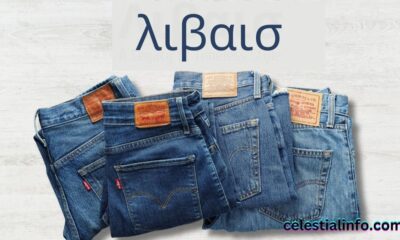
 Fashion9 months ago
Fashion9 months agoThe Rise of λιβαισ in Sustainable Living
-
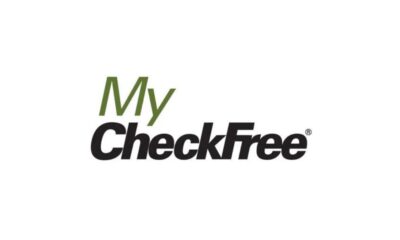
 Blog6 months ago
Blog6 months agoWhat Happened to MyCheckFree? A Comprehensive Guide for Former Users
-

 Technology9 months ago
Technology9 months agoWavr-297: A Transformative Audio Technology
-

 Lifestyle8 months ago
Lifestyle8 months ago92Career: Your One-Stop Shop for Career Success
-

 Blog8 months ago
Blog8 months agoMerchant Cash Advance Blursoft: Quick, Flexible Business Financing
-

 Technology9 months ago
Technology9 months agoUnveiling the Magic: A Deep Dive into Geöe
-
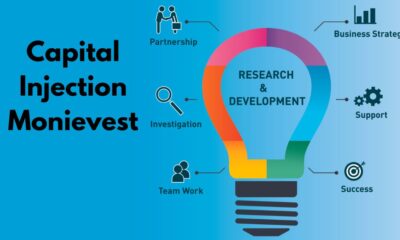
 Business8 months ago
Business8 months agoStrategic Capital Injection for Business Owners: A Comprehensive Guide
-

 Technology8 months ago
Technology8 months agoMahimagicdoll999999 Archives: A Digital Wonderland for Creatives





